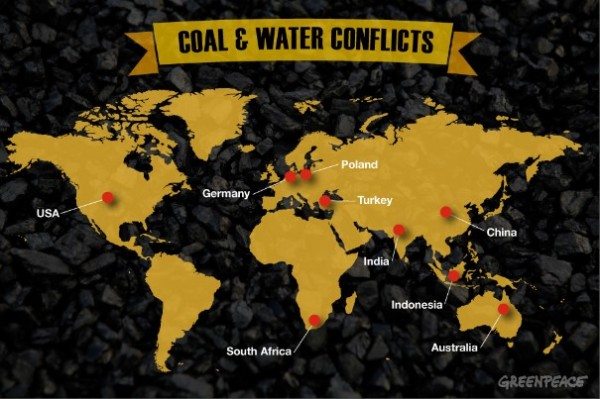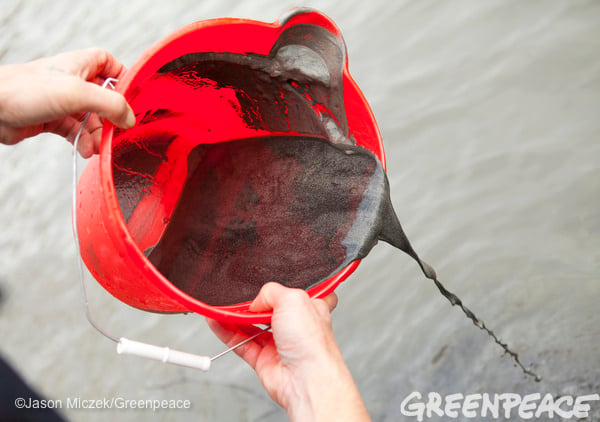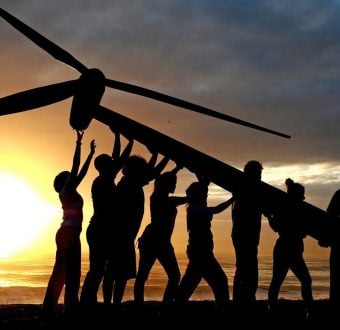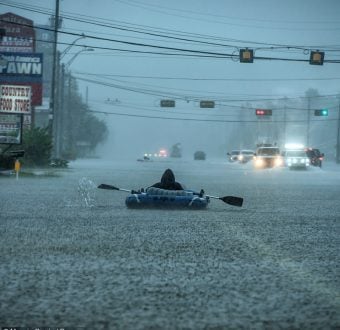Today is World Water Day. We can’t help thinking about how utterly vital water is to all life on this planet, and how distressingly overlooked it is by the industries that exploit it and guzzle it up.
According to the World Health Organization, more than 2 billion people live in countries with absolute water scarcity. That means thatone in three people on the planet face trouble finding water for their basic needs every day. And it’s only getting worse.The number isexpected to rise to 4.6 billion by 2080. Already 63% of the population of Brazil, Russia, India, and China are living under medium to severe water stress; this will increase to 80% by 2030 unless strong measures are introduced.
Amidst this growing problem, the world is also doubling down on coal as a source of energy. Coal is notorious for using up and polluting water at every stage of its use, from extraction to processing to combustion to disposal. A water grab by the coal industry will inevitably lead to conflicts between people and environmental needs.Despite the looming water scarcity crisis, more than 1200 new coal plants are set to be built around the world.
Much of proposed coal expansion is in water stressed regions regions which already have limited available water for sanitation, health, and livelihoods.
On this World Water Day, Greenpeace takes a look at what coal is doing to our water worldwide.
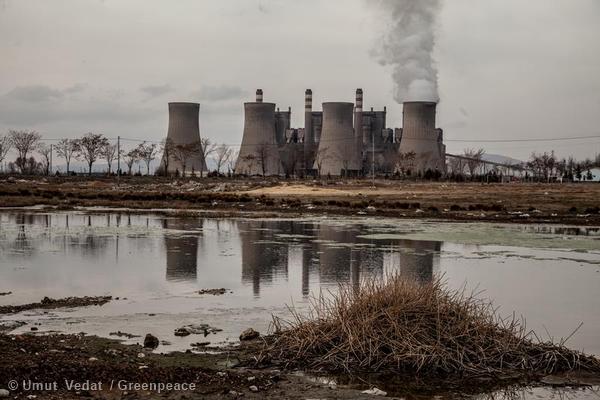
Old cooling water area near Afsin-Elbistan A and B Plants, ogulhan-Kahramanmaras, South East Turkey.
Local people claim that the plants have been responsible for serious health effects and that the ash produced dries up rivers and agricultural lands in the area.
Impact 1. Water grabs by coal plants
In China, a coal chemical project in the dry Inner Mongolia region, part of a new mega coal power base, had extracted so much water in 8 years of operation that caused the local water table to drop by up to 100 meters, andthe local lake to shrink by 62%. The drastic ecological impacts forced thousands of local residents to become ecological migrants. This is just the tip of the iceberg – by 2015, Chinas current plan of 16 such mega coal power bases will consume10 billion m3 of water annually, equivalent to 1/6 of Yellow River annual flow.
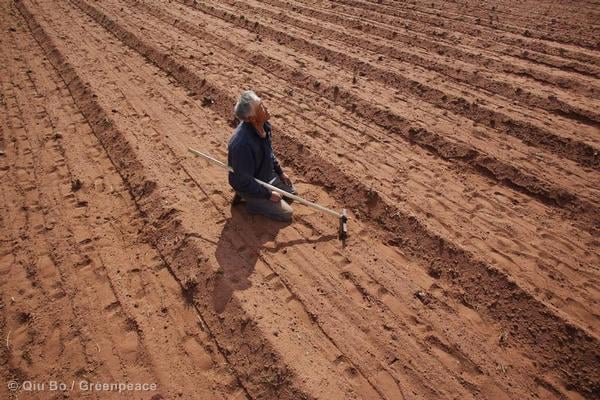
Zhang Dadi, a farmer from the Adaohai Number 1 Commune.The groundwater levels drop every year and it also doesnt rain. For ten years, the Chinese state-run organisation Shenhua Group, has been exploiting water resources at a shocking scale from the Ordos grasslands to use in its coal-to-liquid project Corn planted over a month ago still hasnt started to sprout.
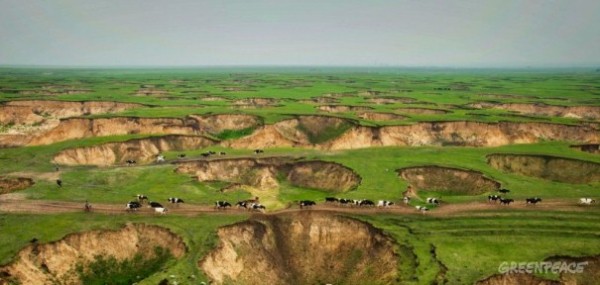
Sinkholes in Inner Mongolia, the result of subsidence caused by mining’s lowering of the water table.
In India, the energy-water conflict is even starker. According to analysis by HSBC and the World Resources Institute,a staggering 79% of new energy capacitywill be built in areas that are already water scarce or stressed, but coal is still the energy of choice despite the clear water constraint. A case in point is the plan to build a cluster of 71 coal plants in the highly water stressed Vidarbha region in Central Maharashtra, where there had been over 6,000 documented farmer suicides in the last decade due tolack of water for irrigation.
In South Africa, the main utility, Eskom, admits that there is no unallocated water available in the catchments that supply its power stations, and argues that, as it is classified as a strategic water user, water would have to be given up by other users most notably irrigation farmers. Moreover, Eskom also argues that their coal plants should be exempt from Minimum Emissions Standards because there isnt enough water to operate the scrubber. The excess emissions of sulfur and nitrous oxides and mercury from their coal fleet areprojected to cause approximately 20000 pre-mature deaths.
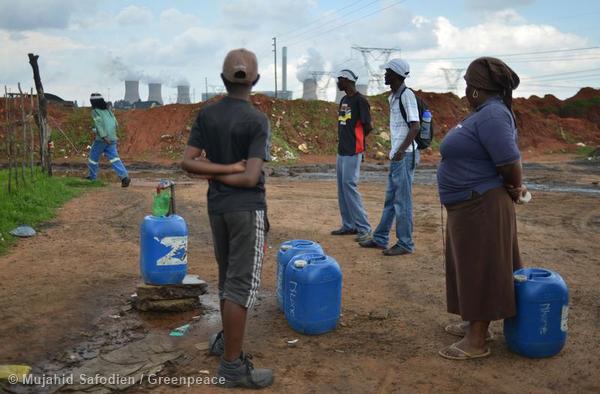
South Africa, MNS informal settlement. Community members wait to fill up water containers at a community tap next to the coal washing station. The water is approximately 500 meters from the settlement.
Impact 2: mining pollution driving water scarcity
Coal mining, especially open-cast mining, is responsible for complete environmental destruction, and has huge impacts to local water resources; groundwater needs to be pumped out of the ground, forests needs to be cut down and fertile top soil are removed in order to access the coal; and in the process destroying valuable underground aquefers, streams and rivers. Moreover, bare lands are easily eroded, degrading the water quality and clogging up rivers downstream, leading to increased flooding risks.

A man stands in front of a reservoir where the Mae Moh power plant had released large quantities of waste water continuously.
Impact 3: coal ash and slurry: long term hazards to communities
Coal combustion creates millions of tons of solid waste in the form of coal ash and scrubber sludge the detritus from the machinery which controls polluting exhaust. This toxic cocktail sits in ponds, often leaching into groundwater. There is no way to clean coal ash up. It is highly hazardous, often containing arsenic, mercury and lead. Living in close proximity to coal ash dumps greatly increases your risk of cancer, heart damage, lung disease and birth defects, among a myriad of other serious illnesses.
In China, there are more than 1,400 coal-fired power plants producing enough coal ash to cover Tianenmen Square with three and a half meters per day. Over 375 million tons of it are produced in a year, and like trash, it all must be stored somewhere.
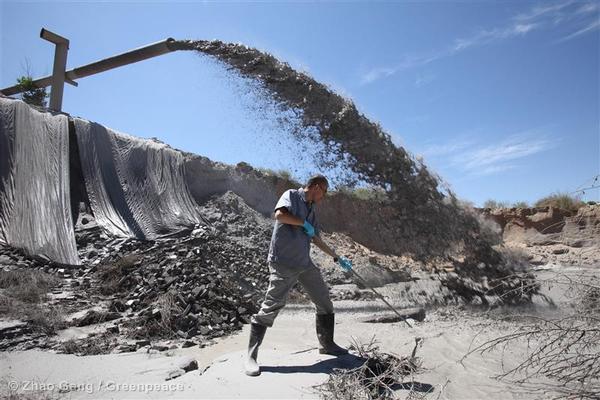
A Greenpeace activist in a coal ash disposal site that belongs to the Yuanbaoshan Power Plant, in Chifeng, Inner Mongolia. Less than half a kilometer away, there is a dairy collection station for a famous dairy company.

